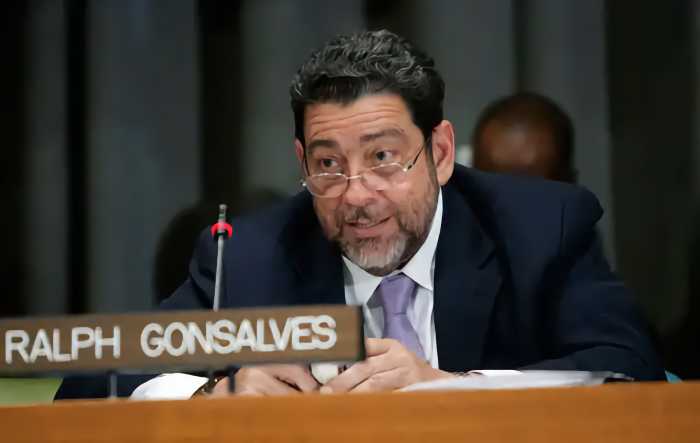David France’s masterly new history of the battle against AIDS does double duty: chronicling the exciting but desperate mobilization against the fatal epidemic while also offering inspiration to activists – many from that earlier fight, but many more who are younger – who must today confront the reality of Donald Trump as president.
AIDS came at a time when the gay rights exuberance unleashed by Stonewall was already under sharp attack. In 1977, Anita Bryant successfully waged a “Save Our Children” repeal fight against a gay rights ordinance in Dade County, Florida, spawning fundamentalist copycats in other cities. By 1981, Ronald Reagan was in the White House, and in New York Mayor Ed Koch – who while in the US House of Representatives had earlier co-sponsored the first federal gay rights bill with Bella Abzug – would backpedal big time before a lesbian and gay business group.
“I respect people who are against gays for religious reasons,’ he said to a silent room,” France writes. “‘Prejudice is a matter of conscience.’”
Just weeks after Koch made those remarks, the New York Times would report, for the first time in the mainstream press, on clusters of gay patients who had fallen ill with mysterious ailments that seemed to have shut down their immune systems.
David France chronicles how the grassroots response to AIDS changed the face of patient advocacy
These overlapping stories are expertly sketched by France in a history that often reads like a thriller. Comprehensive in scope and depth, “How to Survive a Plague: The Inside Story of How Citizens and Science Tamed AIDS” expands on a narrower slice of the story that he told in his 2012 documentary film, which was titled simply “How to Survive a Plague.”
The probability that AIDS resulted from sexual transmission was recognized almost immediately – and rejected just as quickly by the community, much of which angrily rejected the idea that their fun had fatal consequences. Fearful that their civil liberties were under attack, gay men held tight to their new-found freedom. “Sexual abandon,” France writes, in his pithy style that enables him to convey significant and persuasive generalizations, “was a means not only of release, but also of liberation, a utopian ideal, and a necessary antidote to years of repression.”
Dr. Joseph Sonnabend, one of the book’s many heroes – and complicated personalities – speculated that too much semen overloaded the immune system, shutting it down.
“Though soft-spoken Sonnabend was quick to disappointments and muffled rages,” France writes. “He held people to towering, often impossible standards, and he was prone to interior furies against those who disappointed him or systems that failed his moral test.”
Neatly drawn characters like Sonnabend course through France’s book for the simple reason that he lived it. When Reagan went to Washington, France moved to New York; his reporting reflects his front-row seat during the worst of the plague years. Somewhere along the way in all his observations and reporting, he learned a fundamental lesson of history: nobody knows what they are doing and over time events show that we have all made mistakes. Frustrating missteps cost lives, but fortunately medicine ultimately triumphed.
Joining Sonnabend in his push against AIDS were two of his patients, Michael Callen and Richard Berkowitz. The intimate friendship between these two men – which enabled them to share the down and dirty of their sexual adventuring – led them in time to the discovery of safe sex. Berkowitz, who had once worked in a deli, learned he could make a better living as a dom for hire. But when AIDS struck, he and the freewheeling Callen swore off sex to avoid infecting their partners. Their article in the New York Native, the leading gay newspaper of the day, warning in dire terms against promiscuity, won them no friends. It was greeted with fury.
“Berkowitz soon realized he and Callen had been on the wrong track,” France writes. “It wasn’t promiscuity per se causing AIDS, but a certain type of promiscuity. Sex could be safe. Why hadn’t this occurred to him so clearly before?”
The two men drafted a pamphlet in “frank and sometimes playful language” running through – and measuring the risk involved in – a whole range of erotic behaviors, including mutual masturbation and kissing, but also, “leather, bondage, discipline, spanking, titplay, verbal, worship, teasing, affection, humiliation, gadgets, toys, etc.”
Coining the phrase safe sex, they taught gay men the importance of condoms. Their self-published work became a bestseller reviewed in The New York Review of Books. And it worked: gonorrhea cases plunged by 73 percent in San Francisco and 50 percent in New York. Harm reduction offered gay men a way to have sex and stay healthy. It would be another seven years before harm reduction began providing IV drug users the same sort of protection when the first needle exchanges gave them access to sterile injection equipment.
Author David France. | KEN SCHLES/ COURTESY: RANDOM HOUSE
One critical takeaway from France’s account is how a small number of thoughtful people had an outsized impact on the eventual success in taming – if not curing outright – AIDS.
But the process also worked in the other direction, with large numbers of people in unison perpetuating error. Groupthink caused the AZT fiasco, which became an object lesson for those hoping to find a cure. Lying on the shelf at pharmaceutical giant Burroughs Wellcome, the drug produced some early positive results though with frequent enervating side effects – and then nothing. The virus came back strong, the opportunistic infections returned. AZT had received the fastest approval in FDA history, and the drug company inflamed the public by charging $10,000 a year – more than the vast majority of patients could afford or insurance would cover. ACT UP’s dramatic, furious reaction to the price gouging turned the group into a political powerhouse able to force price concessions. But, the victory was for naught: AIDS remained unvanquished.
Still, ACT UP had achieved widespread credibility, and when one of its committees, Treatment + Data, began to look at the science, evaluate the process for approving new medications, and think about how to recruit a patient population to test those meds, the pharmaceutical industry and the public health establishment listened. Treatment + Data is the star of France’s book. Rejecting holistic and homeopathic approaches based in suspicion of traditional medicine, its members were insistent that science and statistics be used to pick a medicine. Their approach was not embraced across the board in ACT UP, with some radicals unwilling to trust Big Healthcare. Those tensions, along with differences that ran deep between gay men and feminists, would splinter the group. Treatment + Data seceded to form the Treatment Action Group.
By the mid-90s, progress on a post-AZT breakthrough, even a cure had dimmed, with despair widespread. At what looked to be the low point, with opportunistic infection treatments delaying but not avoiding deaths, novel new drug combinations began to show remarkable success in keeping the virus from replicating. Correct formulas, at first painstakingly settled on, produced immediate and unmistakable results. Patients who were given days or months to live walked out of the hospital after starting combination anti-retroviral treatment, many finding in short order they were able to resume a work life they had given up on.
France’s book is full of striking and novel profiles even of those AIDS figures we think we know best. Larry Kramer is present in all his vehement glory – with his singular ability to inspire, but also to drive people away with his intermittent but spectacular flameouts. The success of scientists and activists to work together is attributed, as it was in the 2012 documentary, to an astounding stroke of genius by Peter Staley, a gay man with AIDS who made the most of his opportunity to address the annual international AIDS conference in San Francisco in 1990.
President George H.W. Bush was a no-show in San Francisco, and in an act of political contempt chose instead to attend an event honoring the gay community’s arch nemesis, North Carolina Republican Senator Jesse Helms. Staley asked the scientists to stand and join him in this chant: “Three hundred thousand dead from AIDS, where is George?,” a powerful first step toward a fruitful peace treaty.
“But let’s be fair here — when we make mistakes, what’s the fallout?,” he told the crowd, referring to his fellow activists. “Some people become offended and begin to hate ACT UP. Whereas, when government or the scientific community makes a mistake, such as the now-legendary delays in bringing aerosolized pentamidine to market, thousands of people can die.”
A true war against AIDS was never possible because the battle was left to drug companies, each of whom set out the parameters of their efforts to minimize the risk of losing vast amounts of money. “Nothing like a Manhattan Project emerged,” France writes. Free enterprise medicine – abetted by a government at first inert and later often inept – allowed tens, then hundreds of thousands to die. Their stories were harrowing, with the epidemic cutting a medieval swath through the gay community and elsewhere. America limped toward the finish line, finally discovering the medicines to outflank the virus, but the victory is tarnished by its unconscionable delay.
HOW TO SURVIVE A PLAGUE: The Inside Story of How Citizens and Science Tamed AIDS | By David France | Alfred A. Knopf | $30 | 640 pages



















